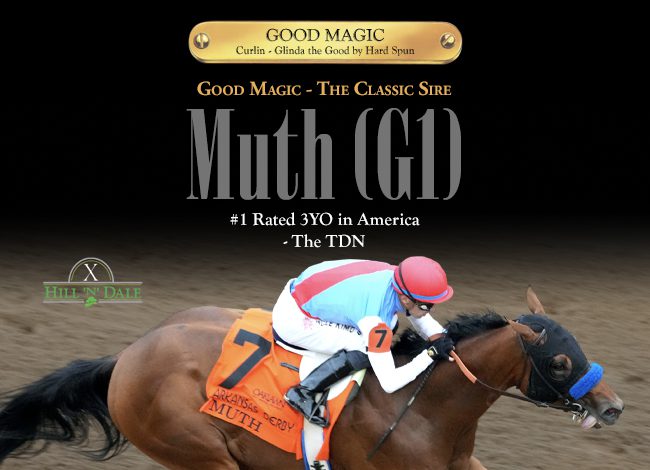Chris McGrath's Value Sires series in the TDN has frequently touched on the difficulty in selling nominations to stallions in their third-year at stud, as well as to solid, established stallions standing for a moderate fee. We asked stallion managers and nominations teams as well as bloodstock agents what changes could be made, if any, to help the situation.
Ken Wilkins, Adena Stallions
I have read with interest the discussion that TDN has facilitated regarding the struggle to fill third-year sires as well as proven but moderately priced horses. As a lifer who has spent more than 20 years in the stallion arena and may have lived through as many third years on new stallions as any, here is my two cents worth…
Stallion stations follow a predictable pattern. They put a horse on the shelf that is appealing to as many breeders as possible. Stallion selections are based on the basics; performance, pedigree, physical and perceived value (price).
In the current era, most first-year horses can get by with ticking some, but not all these boxes; if they fall short in any one area, it will come back to haunt us in later years. You can't go back and fix what they are lacking in year three. Farms can show proper support through advertising and support at the sale–either by selling nice foals or buying nice foals. My experience is that if your horse is at the correct price point (according to the market) in the initial offering and has a good physical and reproduces that, they will sell well enough as foals to carry through the third year with decent numbers.
It is also important to have partners or shareholders that are active in the commercial market to help promote the horse through their efforts along the way. This all helps set the stage for the next step in a stallion's career–can its progeny race?
Getting them into good hands in vital.
There is really nothing really new to add here; it boils down to the same old formula–cut the price and/or risk. You are just trying to convince breeders to breed that year when all they can see is the acceptance in the market of the first foals by that sire. The breeders are now also aware of a recent trend by some stallion stations to dump stallions to another state or country before third crop foals go to the market as yearlings.
We can repackage and rebrand old ideas, but it is all the same old, same old. Do any of these ideas sound familiar? Half price, multi-mare discounts, discounts for stakes mares/stakes producers, complimentary seasons, stud fees payable out of proceeds, stud fees paid out of race earnings, comps with splitting state awards, Lifetime Breeding Right programs, Breed Secure Programs, Profit Protection Programs, stud fee forgive clauses, repeat customer discounts, the practice of strongly suggesting the breeder use a third-year stallion in order to acquire a season to a new or popular stallion, earn in-house credit points or frequent flyer miles–whatever. These have all been used and are all probably available at the time of this writing.
I will stop here and contend that this issue is not a solvable problem with these techniques. The third-year blues are merely a symptom to a central cause. Relieving the symptom does not cure the disease.
The more I thought about it, the more it led to thinking about the underlying issue.
We are asking the wrong question.
Our breeders are nearly all commercially based. We are farmers that take a product to market to sell. The problem we are discussing is caused because there are not enough buyers for the products. It is a buyers' market and has been for a long time; they can pick through and buy what they think are the best and leave the rest. This is evident at every auction–no buyers for a certain percentage of the offerings, regardless of their sire. It is not because the product is no good. We produce, sell and raise many of the best Thoroughbreds in the world here in Kentucky. It makes little sense that a stallion will draw the attention of 300-plus mares in the first two years and then be viewed so differently in year three–except in the commercial context of not appealing to the limited amount of buyers. Correct this if it's wrong, but in a stallion's third year, aren't his foals still all undefeated? Could we not compile a long list of commercial darlings that failed miserably once the first crop got to the track?
Even the redistribution theory behind the proposed Stallion Book Limits will have minimal impact. The fear is that the book limits will cause unintended consequences to arise that we are not smart enough to anticipate. Will it spike the value and stud fees of the most popular stallions each year? If so, how will that impact the next tier stallion values? It feels wrong to have this mandated and not be voluntary, but we really do not have a stellar track record of self-regulation. This is a whole topic unto itself–didn't mean to chase a rabbit here–but in reality it is still treating a symptom and not the cause.
The challenge is to identify and solve the real problem–we do not have enough people that want to own racehorses.
More owners will create more demand for our breeding product, period. Conversely, less demand will exacerbate all our problems. It has already impacted us and we are experiencing a slow and sure gradual shrinking of our business. This year there will be approximately 20,000 foals. When I began my career, that number was 50,000.
If reducing our product has not worked, perhaps we need to work on the other side of the equation and try to increase demand. For many of us, this is our livelihood and our life. It is that important.
We need to determine what motivates ownership and eliminate anything that deters ownership.
This is the question we should discuss. How do we increase racehorse ownership?
Here is a kickstart to the discussion with a partial list of the hot topics of our day with the above question in mind;
Drugs: can this be resolved in a way that is appealing to both current and potential new owners? I get all sides of this issue, but we need to come at it with a different perspective. For example, do trainers want more drugs or more horses to train? At the end of the day, most people will agree they want a level playing field and a fair set of standard rules, with real consequences that will stop abuses.
Whips: will our policy help towards our goal of enticing new owners? This topic has been beat to death.
Racing Czar/ Commissioner (self-appointed or federally policed): seems like this will happen whether we want it or not. Will the end result help with enticing new owners and retain current owners?
Track surfaces: do we need owners to have confidence in the safety of their horses?
Aftercare: this might be the issue of our day. Many efforts have been made to care for our retired horses, but much more needs to be done. It should be an easy task to demonstrate to outsiders how much we care about our horses. Can we come up with a sustainable way to achieve this lofty goal? This should be a selling point for new owners, not a negative.
VIP status for owners: tracks do a really great job of taking care of owners. It should be obvious that it is at the top of their priorities, second only to the horses. Owners should experience a winning atmosphere while racing, even on days when their horses don't win.
Licensing Procedure: anyone try to secure a racing license in different states lately? Not fun, especially for new owners. Not fun at all.
It goes on and on…you probably have your own pet issue that you could add to this list:
Take outs percentages, New wagering products, Purse increases, Free data, Fan appreciation, Free parking, Free programs, Free hot dogs, All you can eat burgoo (come on Keeneland! Burgoo Wednesdays?), Slots (we should study successes and failures), Racing partnerships (this one could have profound impact!).
Many of these issues have long divided us into many different camps and that is understandable. Can we rise above our disagreements and tackle the central problem? Can we focus our efforts to that end? What can each of us do to achieve the outcome of increasing ownership? Let us start with asking the right question. How can we increase demand for our product?
Look forward to comments and solutions.
Not a subscriber? Click here to sign up for the daily PDF or alerts.






